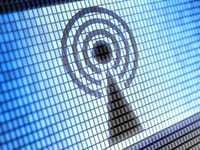Impact of 5G Deployments on Utility Infrastructure
June 3, 2020 | , ::

Wireless telecommunications networks interconnect the nation’s electronics, machinery and systems, fuel national economic growth, and allow millions of people to communicate daily. To enable the high speed, low latency broadband services needed for today’s wireless networks, telecommunications carriers are deploying the fifth generation (5G) of wireless services.
This 5G network is expected to provide technological and economic benefits to consumers, businesses and municipalities. Critical infrastructure including utilities, hospitals, schools, transportation systems and first responders will be profoundly impacted by the new world of 5G. Developing technologies such as Autonomous Vehicles and Smart Electric Grid Solutions such as Fault Locating, Isolation and Restoration (FLISR) will be enabled by 5G.
Much of the 5G network will be deployed using small cell antenna systems which depending on network configuration provide wireless signal coverage of less than 1000 ft. The fiber optic cabling required for small cell backhaul and the small cell equipment, due to its small size, can and is currently being attached to utility structures such as stand-alone streetlights, traffic signals and utility distribution poles.
This presentation will provide an overview of small cell antenna technology and field equipment, the operational challenges and structural impact of installing small cell equipment on utility poles, some of the opportunities that exist for utilities with 5G deployments and review best practices for administering and managing the joint use of wireless, wireline and electric facilities on utility poles.
Learning Outcomes
- Define the basic elements of 5G and small cell technology and their impact on today’s communication trends
- Build utility business case for implementing new technologies and collaboration processes to improve both internal and external utility communications networks
- Establish new technology initiative deployment goals and plan
- Identify the pros and cons for various technology options as they apply to services delivery by a utility or independent regional carrier
- Calculate and determine wood pole loading for small cell application
Instructional Methods
Power Point presentations and open discussion
Wednesday, June 3, 2020 – Central Time
9:45 – 10:00 a.m. :: Login
10:00 a.m. – 12:00 p.m. :: Webinar Timing
10:00 – 10:15 a.m. :: Welcome and 5G Overview
10:15 – 10:30 a.m. :: Small Cell Technology
10:30 – 10:45 a.m. :: Small Cell Equipment
- Descriptions
- Make-ready considerations
- Backhaul options
10:45 – 11:00 a.m. :: Preparing Your Plant for 5G
11:00 – 11:15 a.m. :: Wood Pole Strength & Loading Basics for Overhead Utility Lines
- Loading Characteristics of Small Cell equipment on wood poles
- Methods for modeling pole loading of in-service poles
11:15 – 11:30 a.m. :: Resiliency for Electric and Wireless Services
11:30 – 11:45 a.m. :: Upgrading the Capacity of Wood Poles
11:45 a.m. – 12:00 p.m. :: Records Management and Ongoing Operations
Nelson Bingel, Chairman, ASME Committee
NELSON BINGEL has over 30 years of industry experience focused around structural aspects of overhead lines. He received a BSME degree from Purdue University and has worked on research and development of improved structure inspection processes and restoration systems along with software for field strength and loading evaluation. Nelson was Chairman of the Strength and Loading Subcommittee of the NESC for the last two code cycles and has been Chairman of the full NESC Committee since 2016. Nelson is also Chairman of the Accredited Standards Committee O5 which develops standards for new wood poles and crossarms. [email protected]
Ron Bilodeau, Senior Solutions Consultant, Osmose
RON BILODEAU is a Senior Solutions Consultant – Technical Services with Osmose. Ron has more than 35 years of experience in both telecommunications construction and electric utility operations management. Ron earned an MBA and BA in Communications and Management from the University of Nevada Las Vegas, a Graduate Certificate in Renewable Energy from the University of Nevada Reno, and is a Certified Project Management Professional. In his current role, he provides solutions and recommendations to the utility and broadband industries on a wide-ranging scope of requirements including joint use, broadband buildout, and wireless attachment and colocation programs and processes.
REGISTER NOW FOR THIS EVENT:
Impact of 5G Deployments on Utility Infrastructure
June 3, 2020 | ,
| Individual attendee(s) - $ 395.00 each | |
Buy 4 in-person seats and only pay for 3! For this event every fourth in-person attendee is free!
| Sponsored By |
 |
